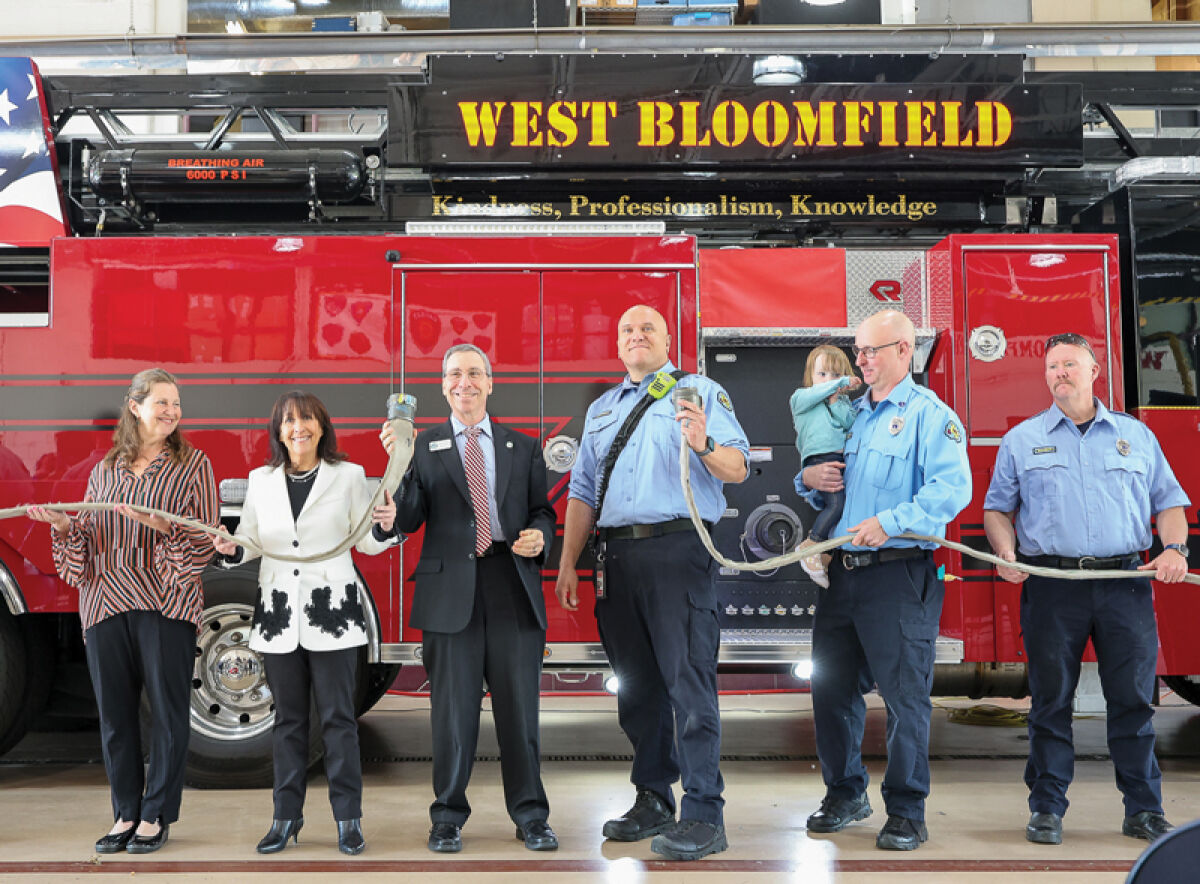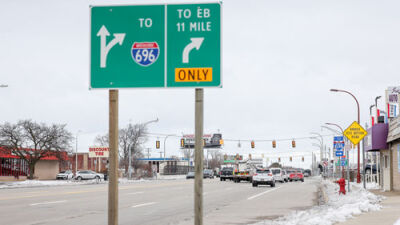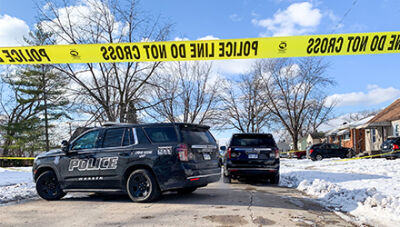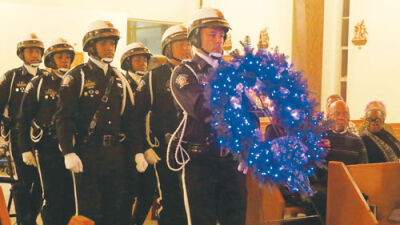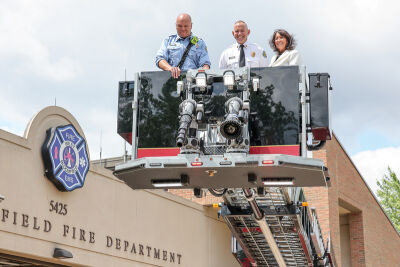
West Bloomfield Fire Department Sgt. Kris Marrs, left, Asst. Chief Mark Lawry and West Bloomfield Clerk Debbie Binder were among those in attendance.
Photo by Patricia O’Blenes
WEST BLOOMFIELD — The West Bloomfield Fire Department recently unveiled its newest asset: a Rosenbauer Commander Cobra.
The state-of-the-art fire truck made its debut during a “push-in ceremony” on June 11. Elected officials and community members attended the event at Fire Station No. 5.
A push-in-ceremony is a fire service tradition that welcomes new trucks into service. Firefighters and residents push the truck into the station — an homage to firefighters of the 1800s, who pushed horse-drawn trucks into the station after the horses were dispatched.
However, the Commander Cobra is 55 feet long and weighs 87,000 pounds. Due to its size, the department opted for attendees to simply connect the hoses instead of pushing.
The vehicle packs 600 horsepower used to operate a pump that delivers 2,000 gallons of water per minute, according to Mark Lawry, the assistant fire chief.
It replaces a similar truck that was in service for 25 years. The department intends for the new truck to last a similar period of time.
“It is designed to be futureproof,” Lawry said.
He noted the truck features high-capacity charging stations that can power lithium batteries, which are becoming increasingly common in equipment such as the Jaws of Life, a tool that pries open crashed vehicles to free people trapped inside.
The truck can also be operated remotely, using one hand on a single joystick to perform tasks such as extending and retracting the ladder. Previously, directional controls were operated with separate levers. The new system is more intuitive and user-friendly, Lawry said.
A computer system also helps level the truck.
“This is instead of the old-fashioned level we used to look at on the back of the truck,” Lawry said. “Someone could stand away from the truck, extend the outriggers, level the truck, raise the ladder, put it in the air over the fire, and direct the monitor from both monitors, all from a remote-control station.”
He added that it typically takes four people to operate the truck, but operating remotely is an option in highly hazardous environments.
The ladder extends more than 100 feet with a basket that can hold 1,000 pounds, transporting up to two firefighters at a time for rescues from tall structures. According to Lawry, this is less scary for those being rescued than being carried down a ladder.
The truck also features a plastic cot that straps in people who can’t walk and lowers them gently to the ground.
Debbie Binder, the clerk of West Bloomfield Township and a board trustee, has followed the project from its inception.
“It was really an exciting moment,” Binder said of the reveal. “The community has always supported public safety and the importance of having the right equipment to keep our community and our firefighters safe.”
According to Binder, when the previous truck had to be retired, West Bloomfield Township was one of the only OAKWAY communities that did not have one. OAKWAY is a support organization that helps provide aid to member departments when emergency circumstances overwhelm their resources.
The truck itself was purchased in 2022 for $1.5 million and delivered earlier this year. Supply chain issues made the wait for the truck longer than expected.
“This is probably the biggest single purchase that a township or community would make to support public safety,” Lawry said. “There were some buildings we were not able to reach. … This truck should be able to reach just about everything we have.”
The truck features the slogan “Kindness, Professionalism, Knowledge” painted on its side, Lawry said, representing the department’s core values.
“West Bloomfield” is written on the back of the truck. The American flag is displayed on the front and back, honoring veterans, Lawry said.
In addition, the front of the bucket is branded with “International Association of Fire Fighters Local 1721,” the union for West Bloomfield firefighters.
“It is one of those trucks, if it is in service on a big fire, (the) media will be there, and we want to let everyone see who is providing the service,” Lawry said.
Although retired trucks are usually sold at auction to smaller communities, the old truck was no longer serviceable, so it was instead sold as scrap.
According to Lawry, the department will go on runs whether the emergency is in a building, up in a tree, on a roof or even underground. At press time, the new truck was expected to begin service within several weeks, after it’s fully outfitted.
“We have to have the tools to respond,” he said.
 Publication select ▼
Publication select ▼